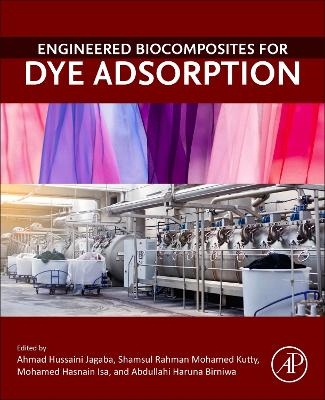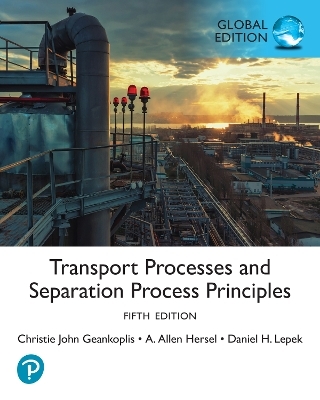
Engineered Biocomposites for Dye Adsorption
Elsevier - Health Sciences Division (Verlag)
978-0-443-29877-6 (ISBN)
- Noch nicht erschienen (ca. Januar 2025)
- Versandkostenfrei
- Auch auf Rechnung
- Artikel merken
The book shows how combining materials such as biocomposites significantly yields better dye adsorption than a single material and addresses conventional issues with adsorption such as adsorbent cost, effectiveness, regeneration, and sustainability and provides insights into the preparation and use of new adsorbent materials for dye removal from aqueous solutions. The information contained in this book will increase readers’ fundamental knowledge, guide future researchers, and can be incorporated into future works on experimental studies on dye adsorption. As such it serves as an indispensable resource and reference work for engineers, wastewater specialists, biotechnologists, chemists, microbiologists, researchers, and students studying industrial effluents, biomass, bioproducts, and adsorption processes.
Dr. Ahmad Hussaini Jagaba is a postdoctoral fellow at the Interdisciplinary Research Centre for Membranes and Water Security, King Fahd University of Petroleum and Minerals, Saudi Arabia. He is also a lecturer in the Department of Civil Engineering, ATBU Bauchi, Nigeria. He obtained his BEng degree from ATBU Bauchi in 2011, MEng degree in civil engineering from UTHM in 2016, and PhD degree in civil engineering from UTP, Malaysia. He has authored and coauthored several articles in environmental sustainability with emphasis on physical/chemical and biological wastewater treatment, bioremediation, biomass conversion, and solid waste management. Dr. Shamsul Rahman Mohamed Kutty is working as a professor in the Civil Engineering Department at the Universiti Teknologi PETRONAS (UTP), Malaysia. He received his PhD degree from the University of Memphis, TN, United States. He has worked with UTP for more than 20 years. Throughout the years, he has been involved in research and consultancies related to environmental management systems, water quality, wastewater treatment, and solid waste management for biogas generation. Dr. Mohamed Hasnain Isa obtained his BSc Eng (Civil) and MSc Eng (Environmental & Water Resources) degrees from the Aligarh Muslim University, India. He completed PhD (Environmental Eng) from the University of Newcastle upon Tyne, England. Dr. Hasnain has held various academic positions in India and Malaysia. He is currently the Assistant Vice Chancellor (Research) and a Professor at the Universiti Teknologi Brunei, Brunei Darussalam. Prof. Hasnain’s research emphasis is on treatment of wastewater with the aim to achieve resource efficiency and advance sustainability. His research focusses on energy recovery through removal of organic matter and degradation of recalcitrant compounds. Dr. Abdullahi Haruna Birniwa is working as a senior lecturer in the Department of Chemistry at Sule Lamido University, Kafin Hausa, Jigawa State of Nigeria. He[CE11] holds PhD degree in polymer chemistry from Bayero University, Kano and the University Malaya in Malaysia in 2019, MSc degree in color chemistry from Bayero University, Kano in 2013, and his BSc degree in applied chemistry from Usmanu Danfodiyo University, Sokoto in 2008. [CE11]Please check the edits made in the sentence “He holds PhD degree in polymer chemistry …. for correctness and amend as necessary.
1. Industrial dye effluent sources, generation, characteristics, and value-added products
2. Impacts of dye contaminated effluents on the environment
3. Fundamental and mechanisms of adsorption processes for dye removal
4. Theoretical and mechanisms of adsorption processes for dye removal by composite adsorbents
5. Activated carbon and its derivative biocomposites for dye adsorption
6. Biochar, hydrochar and their derivative biocomposites for dye adsorption
7. Waste Industrial Sludge and its Derivative Biocomposites for Dye Adsorption, A Comprehensive Review
8. Agricultural wastes and their derivative biocomposites for dye adsorption
9. Geological materials and their derivative biocomposites for dye adsorption
10. Recent Advances in the Preparation and Modification of Eco-friendly Zeolite-based Biocomposites for Dye Adsorption
11. Graphene and its derivative biocomposites for dye adsorption
12. Carbon nanotubes and their derivative biocomposites for dye adsorption
13. Zero-valent iron and its derivative biocomposites for dye adsorption
14. Polymers and their derivative biocomposites for dye adsorption
15. Advances and Prospects of Polymeric Nano-Biocomposites for Dye Adsorption
16. Biopolymer-Based Hydrogels and their Composites for Enhanced Adsorptive Removal of Dyes: Recent Perspectives
17. Metals and their derivative biocomposites for dye adsorption
18. Metal nanoparticles and their derivative biocomposites for dye adsorption
19. Nanomaterials and their derivative biocomposites for dye adsorption
20. Recent Advances in Application of Metal Organic Frameworks for Adsorption of Dye from Wastewater
21. Advances in COFs and COF-Based Biocomposites in Dye Adsorption Processes and Applications
22. Techno-economic and life-cycle assessment of biocomposites for dye adsorption
23. Cleaner and circular bioeconomy approaches for the application of biocomposites in simultaneous dye adsorption and resource recovery
24. Innovations in Sustainable Wastewater Treatment: Integrating Engineered Biocomposites for Enhanced Dye Adsorption
25. Adsorption of Dyes onto 2D Materials and Bio-composites; Environmental Applications and Challenges
26. Performance of Unactivated and Activated Coffee Husk Biochar under Room Temperature Using HNO3 and NaHCO3 for Indigo Carmine dye Adsorption from Water
| Erscheint lt. Verlag | 1.1.2025 |
|---|---|
| Verlagsort | Philadelphia |
| Sprache | englisch |
| Maße | 191 x 235 mm |
| Themenwelt | Technik ► Umwelttechnik / Biotechnologie |
| ISBN-10 | 0-443-29877-7 / 0443298777 |
| ISBN-13 | 978-0-443-29877-6 / 9780443298776 |
| Zustand | Neuware |
| Haben Sie eine Frage zum Produkt? |
aus dem Bereich


